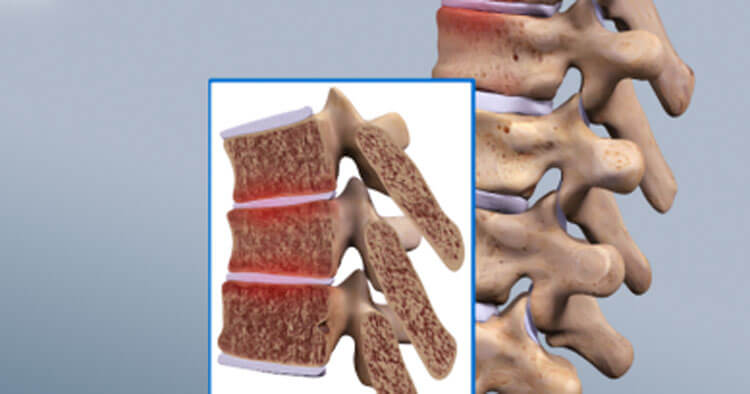Back and Joint Pain
Juvenile Osteochondrosis Of The Spine
What Causes Juvenile Osteochondrosis Of The Spine?
Osteochondrosis is a self-limiting developmental derangement of normal bone growth, and Scheuermann’s disease is considered to be a form of juvenile osteochondrosis of the spine. Normally vertebrae are more or less cylindrical in shape however with Scheuermann’s disease parts of the vertebrae to grow at different rates during a child’s growth spurt and some of the vertebrae to become wedge-shaped. The result of which is an exaggerated forward curvature of the upper back. Scheuermann’s disease cause is unknown, however it has a familial tendency and there are multiple factors that appear to play a role in the development of juvenile osteochondrosis of the spine including:
- infection
- juvenile osteoporosis
- malabsorption
- endocrine disorders
- biomechanical factors (such as a shortened sternum)
Diagnosing Scheuermann’s Disease
Often diagnosis is sought as a result of cosmetic concerns regarding the “hump” appearance of the upper back rather than being due to pain. And frequently there is a delay in diagnosis as it is thought that the child has a postural kyphosis that is correctable and related to weak muscles and not the structural kyphosis that is Scheuermann’s disease. An MRI can show more detail if necessary, however generally diagnosis is made via physical examination including the observation of posture and viewing simple X-Ray films. On X-Ray you are looking for signs of the classical wedge shaping of the thoracic vertebrae and presence of Schmorl’s Nodes (protrusions of the intervertebral disc through the vertebral body endplate and into the adjacent vertebra).
From a measurement point of view on X ray juvenile osteochondrosis of the spine causing Scheuermann’s disease is usually the diagnosis if:
- There is a thoracic curvature of 45deg or more.
- 3 or more adjacent vertebrae are wedged by at least 5deg per segment.
Treatment Of Juvenile Osteochondrosis Of The Spine
A variety of factors will help determine the best treatment approach for Scheuermann’s disease namely patient preferences and other factors for consideration include:
- The severity of the curvature. The human spine is designed to curve, however if the curvature reaches 45 degrees or greater it is considered abnormal and allowing an abnormal curvature to continue to develop may cause pain and cosmetic disfigurement over time.
- The amount of flexibility. Typically with osteochondrosis of the spine there is significant movement restriction in the affected area and the severity of movement and functional restriction may indicate a necessity for treatment.
- If an individual is expected to continue growing. A slight curvature in a young person who is still growing, who shows no sign of the curvature worsening, with mild or no pain may not require any formal intervention. In this situation the individual may just be monitored by a doctor undergoing periodic assessment and or X-rays to keep tabs on the curvature.
- The individuals concerns regarding their appearance as a result of the increased spinal curvature.
Treatment Options
Bracing for individuals who are still growing and have more advanced curvature are frequently prescribed. Bracing for individuals who are no longer growing are not often used as a treatment option. The goal of the brace is to halt (and ideally reverse) any extra curvature during the growing years, this may have the added benefit of reducing pain.
In conjunction with bracing or independent of bracing physiotherapy and an exercise program is often recommended. While exercise won’t actually correct the deformity, exercise however can be beneficial in maintaining flexibility, as well as alleviating back pain.
Surgery is rarely needed for Scheuermann’s disease except in the most advanced cases, and nonsurgical options will typically be attempted before surgery is considered.
Surgery may be suggested if there is a thoracic kyphosis curvature of more than 75 degrees, if neurological deficits are present, and occasionally if pain is caused by the deformity. The goal of the surgery is mainly to reduce the deformity, and possibly lessen pain or any neurological symptoms.
Disclaimer: Sydney Physio Clinic provides this information as an educational service and is not intended to serve as medical advice. Anyone seeking specific advice or assistance on Juvenile Osteochondrosis Of The Spine should consult his or her physiotherapist, general practitioner or otherwise appropriately skilled practitioner.


